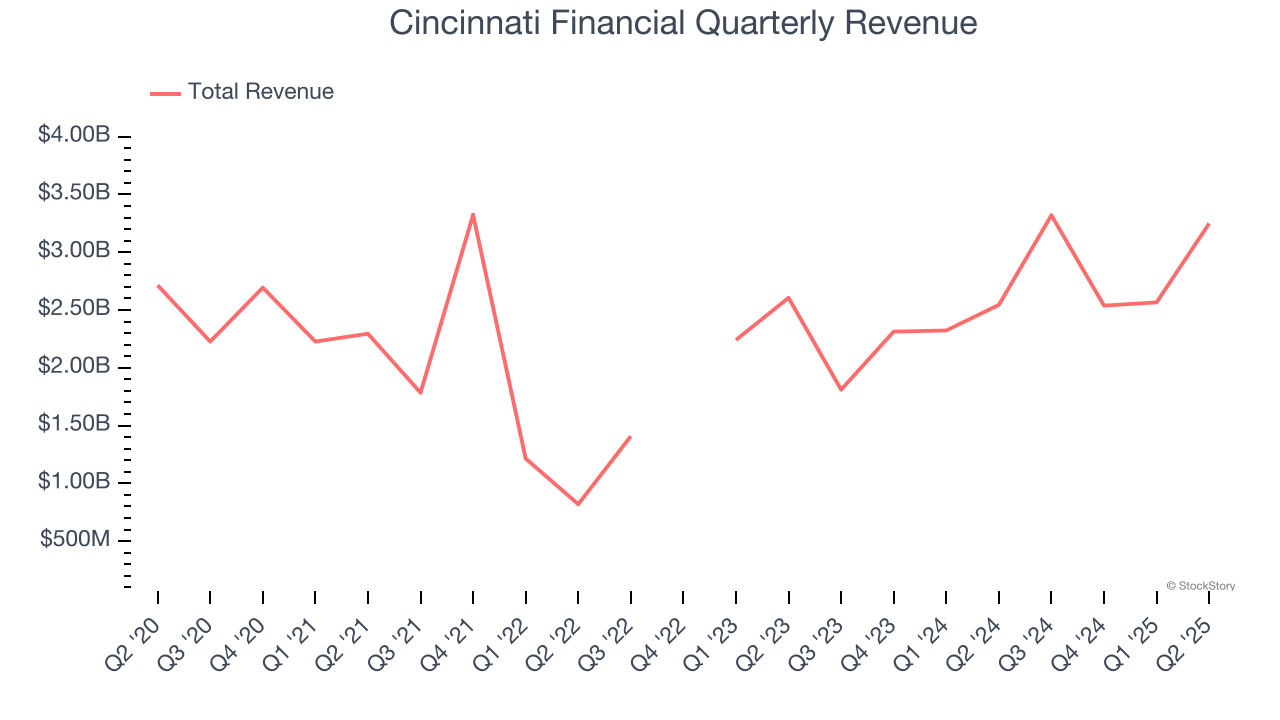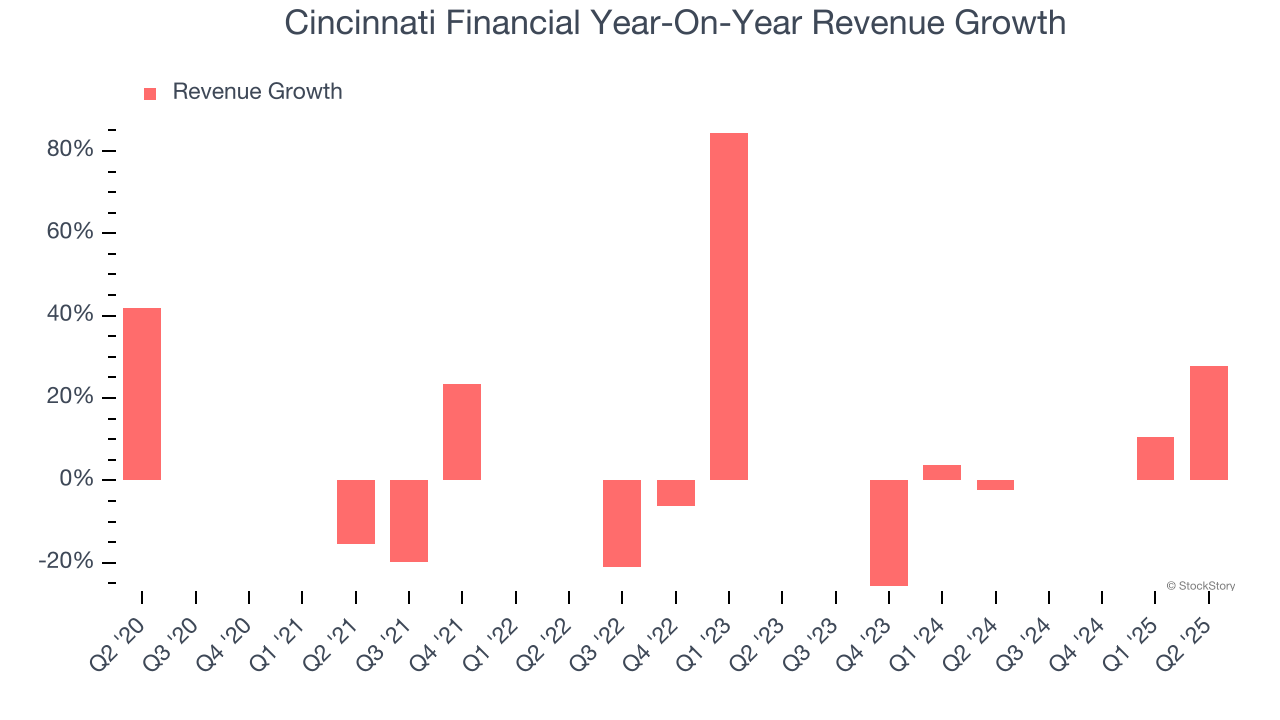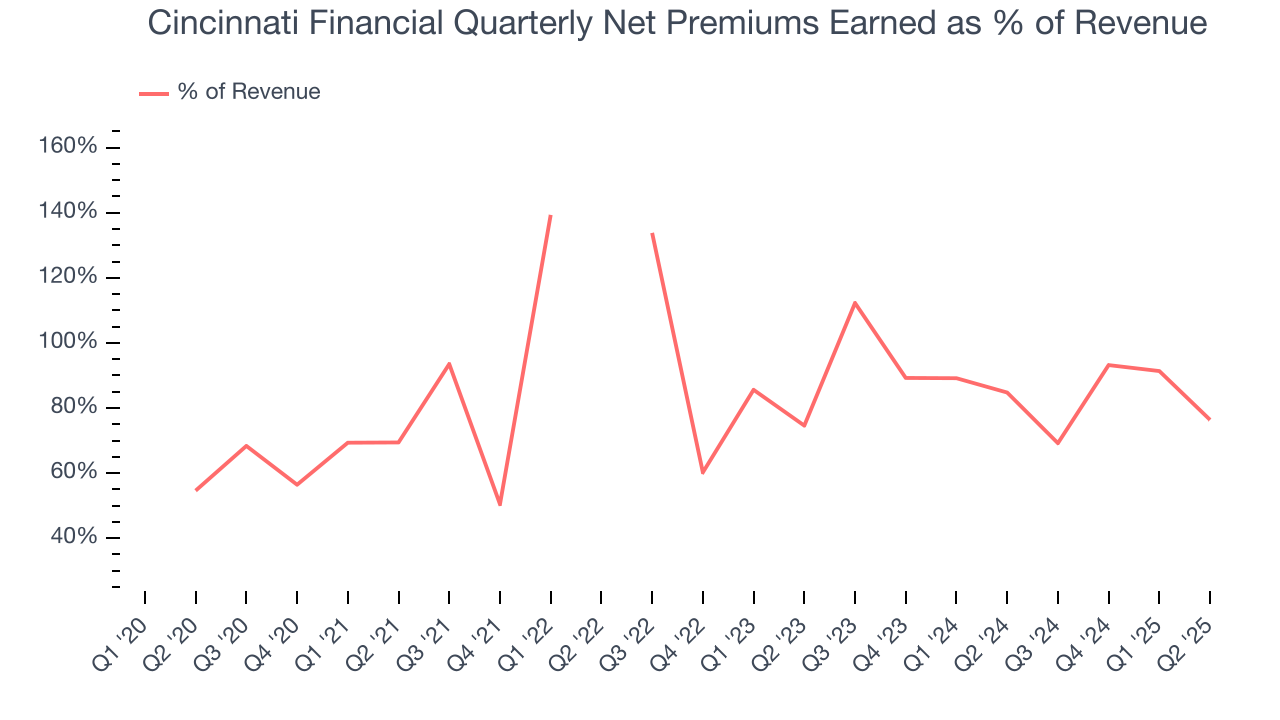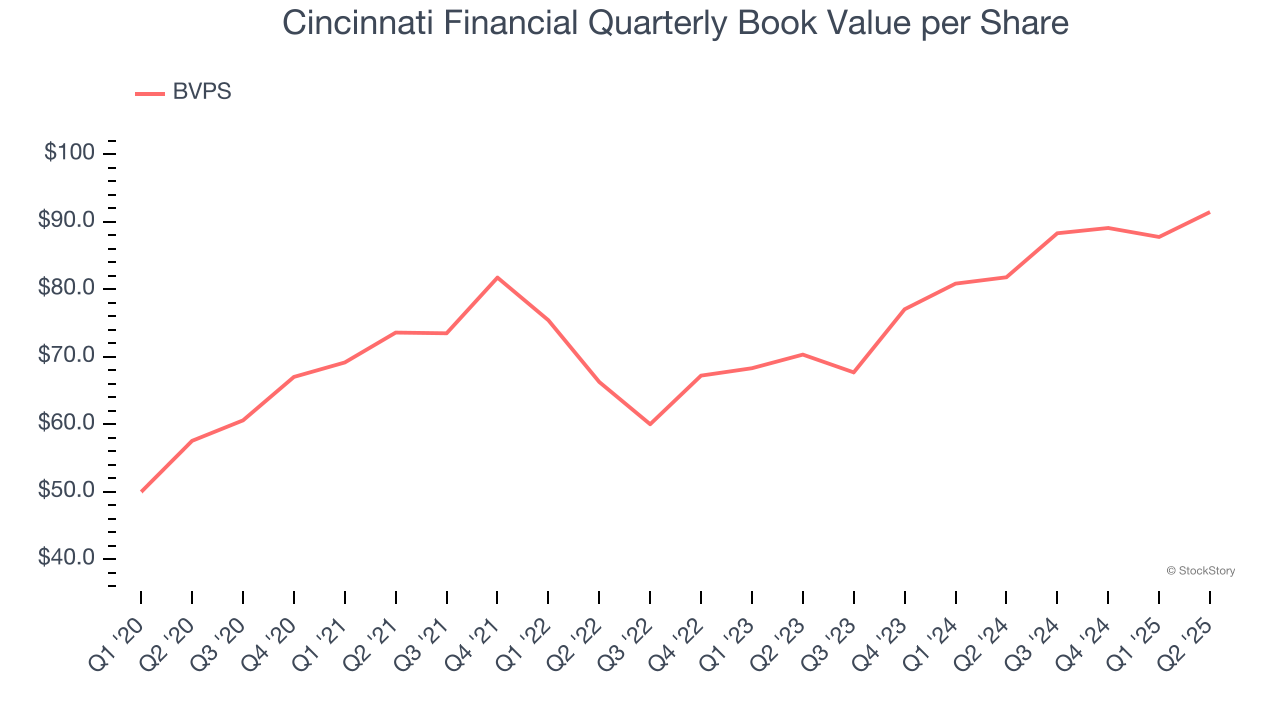
Property casualty insurer Cincinnati Financial (NASDAQ:CINF) announced better-than-expected revenue in Q2 CY2025, with sales up 27.7% year on year to $3.25 billion. Its non-GAAP profit of $1.97 per share was 42% above analysts’ consensus estimates.
Is now the time to buy Cincinnati Financial? Find out by accessing our full research report, it’s free.
Cincinnati Financial (CINF) Q2 CY2025 Highlights:
- Net Premiums Earned: $2.48 billion vs analyst estimates of $2.48 billion (15% year-on-year growth, in line)
- Revenue: $3.25 billion vs analyst estimates of $2.88 billion (27.7% year-on-year growth, 12.8% beat)
- Combined Ratio: 94.9% vs analyst estimates of 99% (4.1 percentage point beat)
- Adjusted EPS: $1.97 vs analyst estimates of $1.39 (42% beat)
- Market Capitalization: $23.35 billion
Company Overview
Founded in 1950 by independent insurance agents seeking stable market options for their clients, Cincinnati Financial (NASDAQ:CINF) provides property casualty insurance, life insurance, and related financial services through independent agencies across 46 states.
Revenue Growth
Big picture, insurers generate revenue from three key sources. The first is the core business of underwriting policies. The second source is income from investing the “float” (premiums collected upfront not yet paid out as claims) in assets such as fixed-income assets and equities. The third is fees from various sources such as policy administration, annuities, or other value-added services.
Unfortunately, Cincinnati Financial’s 6.8% annualized revenue growth over the last five years was mediocre. This wasn’t a great result compared to the rest of the insurance sector, but there are still things to like about Cincinnati Financial.
 Note: Quarters not shown were determined to be outliers, impacted by outsized investment gains/losses that are not indicative of the recurring fundamentals of the business.
Note: Quarters not shown were determined to be outliers, impacted by outsized investment gains/losses that are not indicative of the recurring fundamentals of the business.Long-term growth is the most important, but within financials, a half-decade historical view may miss recent interest rate changes and market returns. Cincinnati Financial’s annualized revenue growth of 11.6% over the last two years is above its five-year trend, suggesting its demand recently accelerated.  Note: Quarters not shown were determined to be outliers, impacted by outsized investment gains/losses that are not indicative of the recurring fundamentals of the business.
Note: Quarters not shown were determined to be outliers, impacted by outsized investment gains/losses that are not indicative of the recurring fundamentals of the business.
This quarter, Cincinnati Financial reported robust year-on-year revenue growth of 27.7%, and its $3.25 billion of revenue topped Wall Street estimates by 12.8%.
Net premiums earned made up 82.4% of the company’s total revenue during the last five years, meaning Cincinnati Financial barely relies on non-insurance activities to drive its overall growth.
 Note: Quarters not shown were determined to be outliers, impacted by outsized investment gains/losses that are not indicative of the recurring fundamentals of the business.
Note: Quarters not shown were determined to be outliers, impacted by outsized investment gains/losses that are not indicative of the recurring fundamentals of the business.Our experience and research show the market cares primarily about an insurer’s net premiums earned growth as investment and fee income are considered more susceptible to market volatility and economic cycles.
Unless you’ve been living under a rock, it should be obvious by now that generative AI is going to have a huge impact on how large corporations do business. While Nvidia and AMD are trading close to all-time highs, we prefer a lesser-known (but still profitable) stock benefiting from the rise of AI. Click here to access our free report one of our favorites growth stories.
Book Value Per Share (BVPS)
Insurance companies are balance sheet businesses, collecting premiums upfront and paying out claims over time. The float–premiums collected but not yet paid out–are invested, creating an asset base supported by a liability structure. Book value per share (BVPS) captures this dynamic by measuring these assets (investment portfolio, cash, reinsurance recoverables) less liabilities (claim reserves, debt, future policy benefits). BVPS is essentially the residual value for shareholders.
We therefore consider BVPS very important to track for insurers and a metric that sheds light on business quality. While other (and more commonly known) per-share metrics like EPS can sometimes be lumpy due to reserve releases or one-time items and can be managed or skewed while still following accounting rules, BVPS reflects long-term capital growth and is harder to manipulate.
Cincinnati Financial’s BVPS grew at a solid 9.7% annual clip over the last five years. BVPS growth has also accelerated recently, growing by 14% annually over the last two years from $70.34 to $91.46 per share.

Over the next 12 months, Consensus estimates call for Cincinnati Financial’s BVPS to grow by 2.9% to $89.75, lousy growth rate.
Key Takeaways from Cincinnati Financial’s Q2 Results
We were impressed by how significantly Cincinnati Financial blew past analysts’ EPS expectations this quarter. We were also excited its revenue outperformed Wall Street’s estimates by a wide margin. Zooming out, we think this quarter featured some important positives. The stock remained flat at $147.10 immediately after reporting.
Is Cincinnati Financial an attractive investment opportunity right now? We think that the latest quarter is only one piece of the longer-term business quality puzzle. Quality, when combined with valuation, can help determine if the stock is a buy. We cover that in our actionable full research report which you can read here, it’s free.
